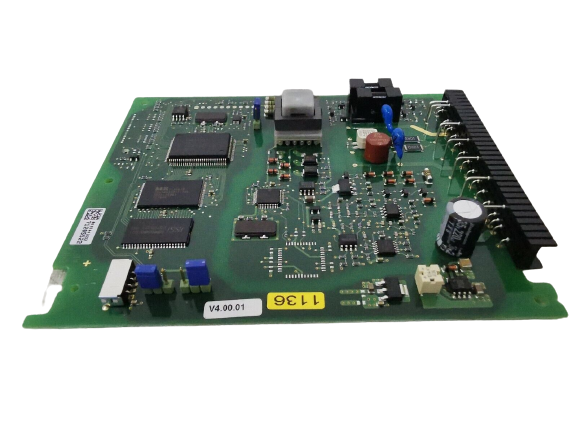
World Of Controls understands the criticality of your requirement and works towards reducing the lead time as much as possible.
IS420PFFAH1B - I/O Foundation FieldBus is available in stock which ships the same day.
IS420PFFAH1B - I/O Foundation FieldBus comes in UNUSED as well as REBUILT condition.
To avail our best deals for IS420PFFAH1B - I/O Foundation FieldBus, contact us and we will get back to you within 24 hours.
SPECIFICATIONS:
Part Number: IS420PFFAH1B
Manufacturer: General Electric
Series: Mark VIe
Product Type: I/O Foundation Fieldbus
Number of channels: 12
Common Mode Voltage Range: +5 V dc
Maximum Lead Resistance: 15Ω
Analog output current: 0-20 mA
Operating temperature: -30 to 55 °C
Size: 8.26 cm high x 4.16 cm
Frequency: 50 or 60 Hz
Repair: 3-7 Day
Availability: In Stock
Weight: 2 lbs
Country of Origin: United States
Manual: GEH-6721
FUNCTIONAL DESCRIPTION:
IS420PFFAH1B is an I/O Foundation FieldBus manufactured and designed by General Electric as part of the Mark VIe Series used in GE Distributed Control Systems. The I/O Foundation Fieldbus is a digital communication protocol used in process automation systems. It is designed specifically for connecting field devices, such as sensors and actuators, to control systems in industrial applications. Fieldbus technology is used to transmit digital data between devices in a distributed control system (DCS). The I/O Foundation Fieldbus provides a standardized method for communication, allowing different devices from various manufacturers to interoperate seamlessly.
FEATURES:
Digital Communication: The protocol enables the transmission of digital data, including process variables, device status, diagnostics, and control commands. This eliminates the need for analog signals, resulting in improved accuracy and reliability.
Multidrop Topology: Fieldbus networks can be organized in a multidrop topology, where multiple devices are connected to a single communication line, simplifying wiring and reducing installation costs.
Power and Data Over a Single Cable: Fieldbus devices can receive both power and data over the same cable, reducing the number of cables required and enabling remote device configuration and diagnostics.
Device Integration: Fieldbus devices can be easily integrated into control systems, thanks to standardized communication protocols. This simplifies system configuration and maintenance, as devices from different manufacturers can be seamlessly integrated into a single network.
Flexibility and Expandability: Fieldbus networks are highly flexible and can be easily expanded to accommodate additional devices or system changes without significant disruption.
WOC has the largest stock of GE Distributed Gas Turbine Control System Replacement Parts. We can also repair your faulty boards. WORLD OF CONTROLS can also supply unused and rebuilt backed-up with a warranty. Our team of experts is available round the clock to support your OEM needs. Our team of experts at WOC is happy to assist you with any of your automation requirements. For pricing and availability on any parts and repairs, kindly get in touch with our team by phone or email.
FREQUENTLY ASKED QUESTIONS:
What is the I/O Foundation Fieldbus?
The I/O Foundation Fieldbus is a digital communication protocol used in process automation systems to connect field devices, such as sensors and actuators, to control systems in industrial applications.
How does the I/O Foundation Fieldbus work?
The I/O Foundation Fieldbus uses a multidrop topology, where multiple devices are connected to a single communication line. It enables the transmission of digital data between devices, eliminating the need for analog signals.
What are the advantages of using the I/O Foundation Fieldbus?
Some key advantages of the I/O Foundation Fieldbus include digital communication for improved accuracy and reliability, simplified wiring through multidrop topology, power and data transmission over a single cable, easy device integration with standardized protocols, advanced diagnostics capabilities, and flexibility for system expansion.